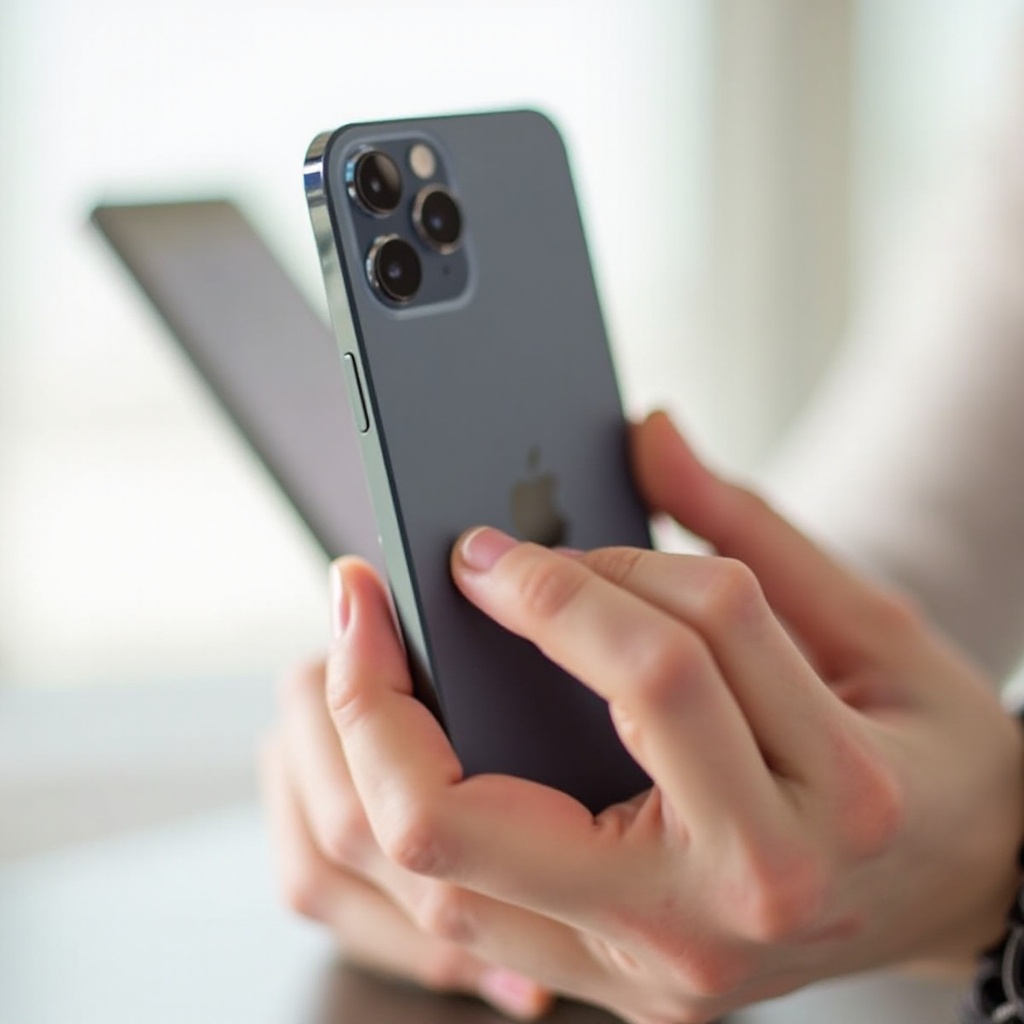iPhone 14 Fingerprint Sensor Location: What You Need to Know
Introduction
The fingerprint sensor has grown to be a pivotal feature in modern smartphones, balancing security and convenience. While earlier iPhone models transitioned to Face ID, the iPhone 14 revives the fingerprint sensor, catering to users who favor this technology. This article explores the evolution of iPhone fingerprint sensors, unveils the specifics of the iPhone 14 sensor, and provides insights on its setup and advantages.

Evolution of iPhone's Fingerprint Sensors
Early Models and Home Button Integration
The journey of the iPhone's fingerprint sensor began in 2013 with the introduction of Touch ID in the iPhone 5s. Integrated into the home button, Touch ID allowed users to unlock their devices and authenticate purchases easily, setting a new standard for biometric security in smartphones.
Transition to Face ID and Beyond
In 2017, the iPhone X introduced Face ID, replacing Touch ID with facial recognition technology for securely unlocking devices and authorizing transactions. While Face ID represented a technological leap, some users missed the simplicity and convenience of Touch ID.
The Return of the Fingerprint Sensor
Recognizing the demand for diversified biometric options, Apple reintroduced the fingerprint sensor in the iPhone 14. Offering both Face ID and Touch ID, the iPhone 14 caters to users favoring a versatile and secure authentication method.
Unveiling the iPhone 14 Fingerprint Sensor
Design and Technology Behind It
The iPhone 14's fingerprint sensor is embedded beneath the display, utilizing advanced optics and capacitive technologies. This integration is nearly invisible, optimizing both aesthetics and functionality. The design ensures a larger screen-to-body ratio, creating an immersive user experience.
Official Announcements from Apple
Apple highlighted the innovative aspects of the under-display sensor in their announcement, stating its superior accuracy and speed compared to earlier versions. The sensor's placement beneath the display aligns with Apple's commitment to blending advanced technology with sleek design.
How Users Can Identify the Sensor's Location
Identifying the sensor's location is simple. It sits beneath the lower half of the display. On-screen prompts guide users to place their fingers correctly during setup or use, ensuring ease and accuracy.
Setting Up and Using iPhone 14's Fingerprint Sensor
Step-by-Step Setup Guide
Setting up the fingerprint sensor on the iPhone 14 is straightforward:
- Navigate to Settings > Touch ID & Passcode.
- Tap 'Add a Fingerprint.
- Follow the on-screen instructions to place your finger on the sensor.
- Move your finger around to capture all parts of your fingerprint.
- Continue lifting and resting your finger as prompted until the setup is complete.
Tips for Optimal Performance
For optimal performance:
- Ensure your finger is clean and dry.
- Register multiple fingerprints for convenience.
- Periodically re-register your fingerprints to maintain accuracy.
- Keep the display area clean to avoid smudges.
Troubleshooting Common Issues
If you encounter issues with the fingerprint sensor:
- Restart your iPhone.
- Clean the display to remove any dirt or smudges.
- Reconfigure your fingerprint settings.
- Contact Apple Support if problems persist.
Advantages of the Fingerprint Sensor Location
The under-display fingerprint sensor in the iPhone 14 offers multiple benefits. This design enhances user accessibility, allowing for a natural interaction without adjusting grip or orientation. It augments security by reducing the risk of physical damage and tampering and provides a dual-layer of biometric protection when combined with Face ID.
Compared to previous models that housed the fingerprint sensor in the home button, the under-display placement is more discreet and offers uninterrupted screen real estate, setting a new standard in smartphone design.

Addressing Common Questions and Myths
There are several questions and myths about the iPhone 14 fingerprint sensor. Contrary to the belief that under-display sensors are less accurate, the iPhone 14's advanced sensor offers exceptional precision. The coexistence of Touch ID and Face ID does not compromise efficiency; instead, it offers flexible and secure authentication options.
Conclusion
The iPhone 14 fingerprint sensor embodies a blend of innovation and user preference. Its under-display location, coupled with advanced technology, offers both aesthetic appeal and enhanced security. For users seeking seamless and secure authentication, the iPhone 14 provides an exemplary solution.
Frequently Asked Questions
Where exactly is the fingerprint sensor located on the iPhone 14?
The fingerprint sensor on the iPhone 14 is embedded beneath the lower half of the display, almost invisible to the naked eye, offering a seamless and intuitive user experience.
How do I set up the fingerprint sensor on my iPhone 14?
To set up the fingerprint sensor, go to Settings > Touch ID & Passcode, tap 'Add a Fingerprint,' and follow the on-screen prompts to capture your fingerprint accurately.
Is the fingerprint sensor more secure than Face ID?
Both the fingerprint sensor and Face ID offer high levels of security. Combining both technologies in the iPhone 14 provides a dual-layer of protection, enhancing overall security and flexibility.



